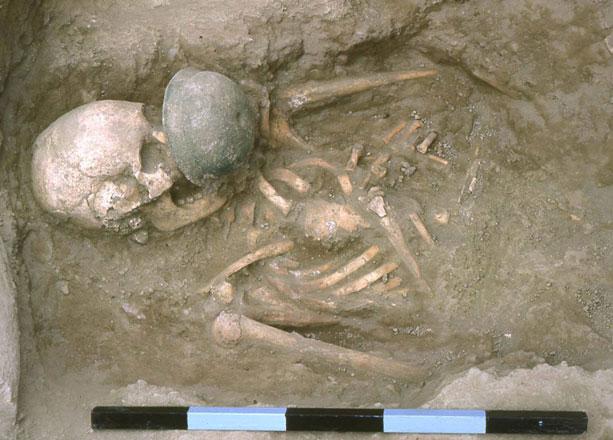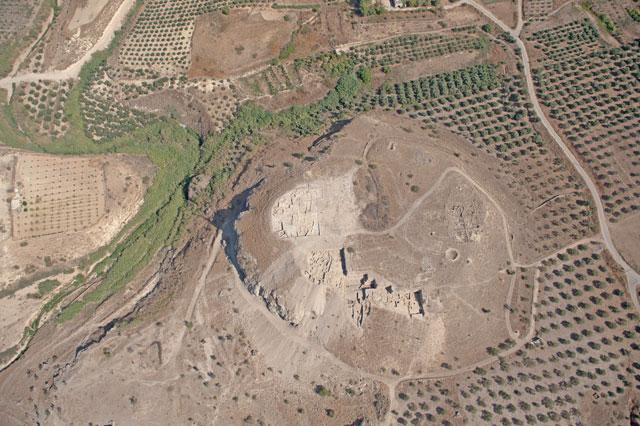You are here
Scholar explores burial practices of ‘Sea Peoples’ in Jordan Valley
By Saeb Rawashdeh - Nov 22,2017 - Last updated at Nov 22,2017

Jack Green
AMMAN — British-American archaeologist Jack Green became interested in the archaeology of the Middle East and the Levant as he came across a group called “Sea Peoples” during his studies at the University of Liverpool.
The group was mentioned in many ancient sources as having settled in the Levant from the Aegean around 1,200BC, according to the scholar who said: “I became interested in debates about how material culture might be used to identify identity in the archaeological record — including ethnicity, and that drew me to an interest in the archaeology of death, burial and personal ornamentation.”
Green then decided to come study the site of Tell es-Sa‘idiyeh in the Jordan Valley. “At the time, there was a debate about whether the cemetery included burials of ‘Sea Peoples’, so I wanted to see if this was the case, and if any of the burials suggested this,” he told The Jordan Times in a recent interview.
“What I found out added a lot to our overall picture of the site and the region,” Green noted, stressing that ornaments could be used to mark gender, age and status distinctions.
Male adult burials were found with sometimes just a single earring or finger ring, sometimes with an Egyptian-style scarab, which may be a mark of status, the British-American scholar stressed.
“It is not really possible to tell the ethnicity from the ornaments, as I found — these ornaments are very common throughout the region. Some infants and some of the women also typically wore shell, stone, faience and glass beads, some with amulets including glass eye beads,” Green highlighted.
They were also found wearing bronze anklets and iron bangles while some women wore quite heavy anklets when they were buried in the cemetery. “I interpret this as related to gendered distinctions in dress and the wearing of family wealth on the body,” said Green, who was recently appointed as associate director at the American Centre of Oriental Research in Amman.
Furthermore, in times before banks and currency, such ornaments served as a way of storing and displaying wealth and protecting the family, he underlined.
“Around 3,000 years ago, a pair of heavy bronze anklets could have been exchanged for a sheep or goat, so quite valuable. Ornaments were not just pretty things, they could help a family survive hard times,” Green elaborated.
The period he researched was the shift between Late Bronze Age (LB) and the beginning of the Iron Age: “What I think we see at Tell es-Sa’idiyeh is a change in the way people commemorated and celebrated the dead at the time of the funeral.”
In the early phase, around 1250-1100 BC (LB-Iron I transition), some of the male and female burials were quite rich, relatively speaking, the archaeologist claimed, adding that the burial, excavated in the 1960s by Jim Pritchard and nicknamed the “Queen of Zarethan” — had objects made from ivory, electrum jewellery and a bronze wine set — and is one of the wealthiest burials of this period in the southern Levant.
In the subsequent period, ca. 1100-900 BC (Early Iron Age), “we see a change with a much smaller number of objects in graves — such as a juglet and some ornaments, though a few male burials continue to have the bronze bowls and animal offerings — so maybe such offerings or rituals were reserved for the adult males, Green speculated.
“This is a possible sign of the marking of male status and perhaps a greater degree of patriarchy in society,” he pointed out, adding that the social identity of the population of the Jordan Valley is another field that scholars should study as it was “quite diverse”.
The wider region in the Late Bronze Age was known as Canaan, a rural area with farmers and pastoralists, but also a strategic crossing point of the Jordan River in this period, important for trade and military control, Green emphasised.
“We know the Egyptians were active here in the New Kingdom. Some of the burials from the 13th-12th century BC have simple Egyptian pottery related to bread and beer in them, so maybe there was a strong relationship with nearby Egyptian garrisons, such as Beisan in the north.
For the Early Iron Age, this part of the Jordan Valley is associated with biblical Gilead. There were also military conquests from Egypt (pharaoh Shishak) and Damascus (Hazael) at different points of time that may have impacted the Jordan Valley in the early first millennium BC, the scholar noted.
Related Articles
AMMAN — Located in the central Jordan Valley, Tell es-Sa’idiyeh has a very long history of occupation, stretching from the Bronze Age to the
AMMAN — The associate director of the American Centre of Oriental Research (ACOR), Jack Green, on Wednesday delivered a lecture on the rich
AMMAN — Cultural transitions have always been of particular interest to scholars, said Katja Soennecken, assistant director for the German P

















